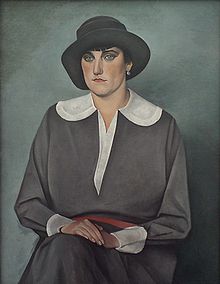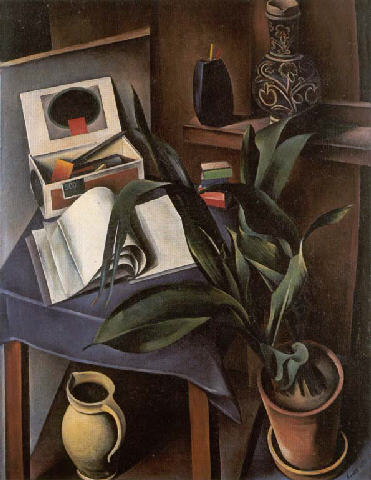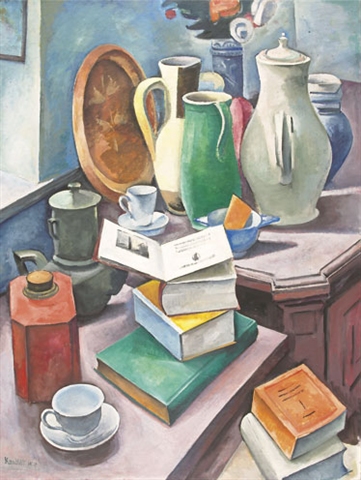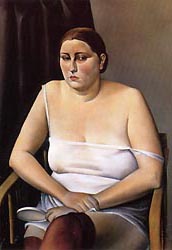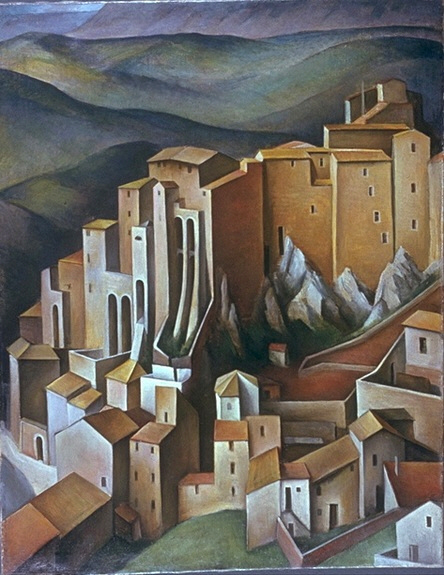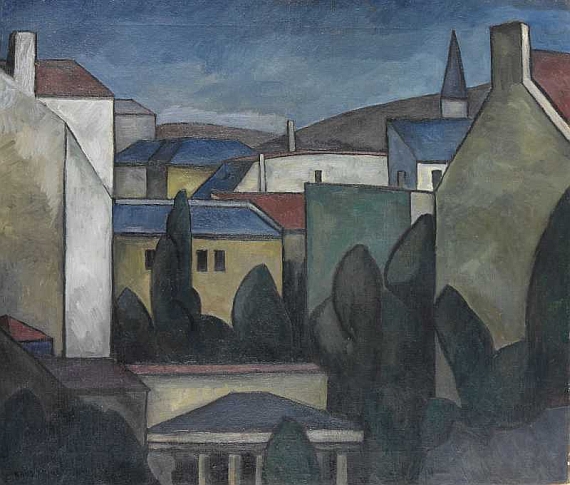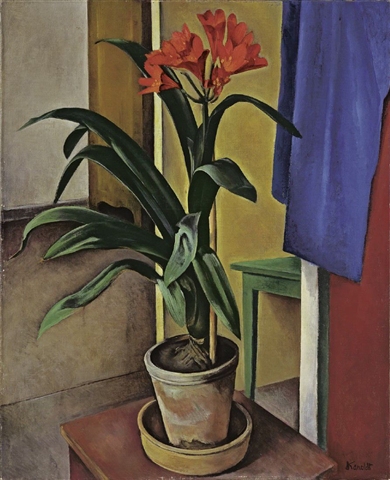<Back to Index>
- Painter Georg Schrimpf, 1889
- Painter Alexander Kanoldt, 1881
PAGE SPONSOR
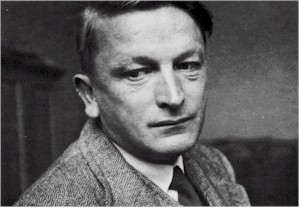
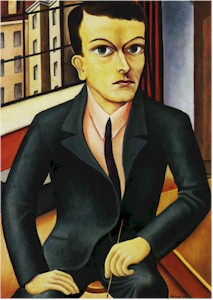
Georg Schrimpf (13 February 1889 – 19 April 1938), was a German painter and graphic artist. Along with Otto Dix, George Grosz and Christian Schad, Schrimpf is broadly acknowledged as a main representative of the art trend Neue Sachlichkeit (usually translated New Objectivity), which developed in the 1920s as a counter - movement to Expressionism and Abstraction. Schrimpf was listed as a degenerate artist by the German National Socialist government in the 1930s.
Schrimpf was born in Munich. His father died before Schrimpf's birth; his stepfather forced him to leave home. In 1902 he apprenticed as a baker in Passau. From 1905 – 1914 Schrimpf wandered through Belgium, France, Switzerland and Northern Italy, working as a waiter, baker, and coal shuffler. In 1913 he lived in an anarchist colony in Switzerland, where he formed a friendship with Oskar Maria Graf, also a baker, but later a famous novelist.
With the outbreak of the First World War, the anti - militaristic Schrimpf "successfully employed every possible trick to avoid military service; in so doing, however, he ruined his health". From 1915 – 1918 Schrimpf lived in Berlin, where he worked as a freelance artist. In his free time he used every minute for drawing, painting, and wood carving. Mostly self - taught as an artist, he learned by copying the Old Masters.
In 1916 the famous publicist and art expert Herwarth Walden exhibited some paintings and woodcarvings of Schrimpf in his Sturm Gallery.
They got much attention. At this time and in this gallery Schrimpf met
the painter Maria Uhden, whom he married in 1917, and who died the
following year.
In 1925 Schrimpf participated in the Neue Sachlichkeit exhibition at the Mannheim Kunsthalle. Two years later, he began teaching at the Meisterschule für Dekorationskunst in Munich. Unlike many artists of the New Objectivity movement, Schrimpf was not immediately persecuted when the Nazis took power in 1933, as his work was seen as an acceptable form of German Romanticism by the authorities. He became professor at an art academy in Berlin in 1933, but was fired in 1937 because of his “red past”. He had been a short time member of “Rote Hilfe”, a socialist organization. For the same reason the Nazi regime banned his works from public exhibitions. Schrimpf died in Berlin on 19 April 1938.
In 1995 Deutsche Bundespost honored Schrimpf with a special stamp issue, based on his “Still life with cat” from 1923.
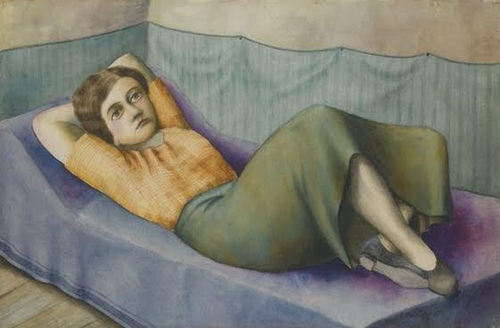
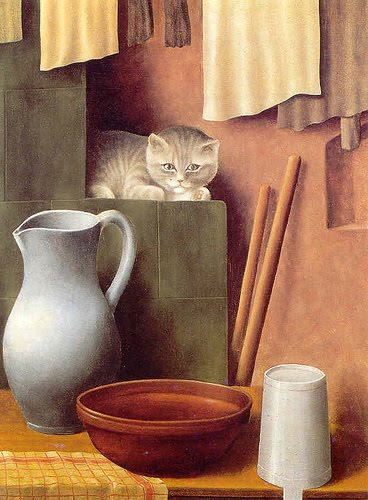
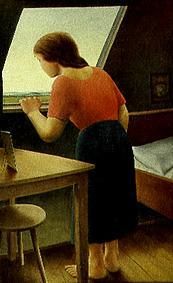
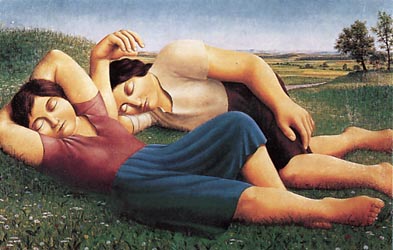
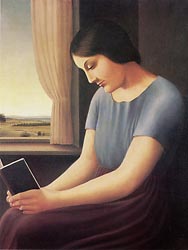
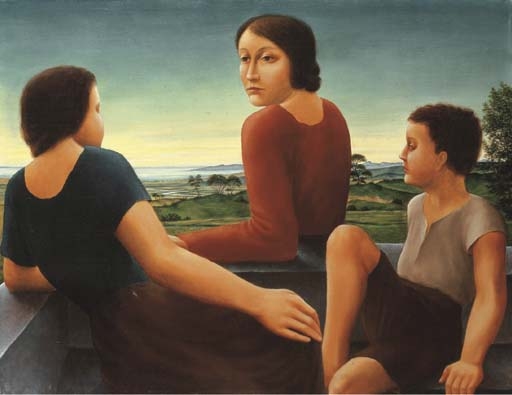
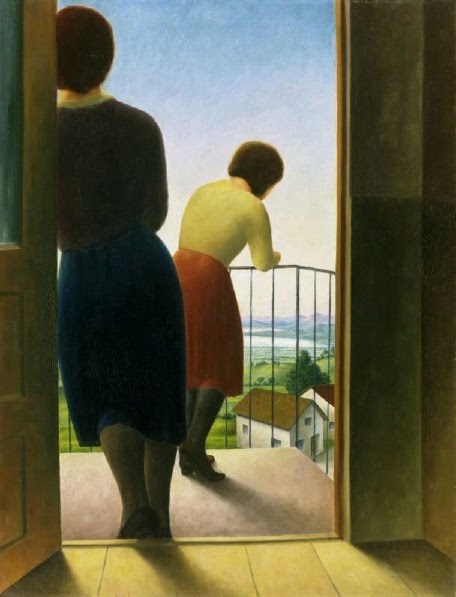
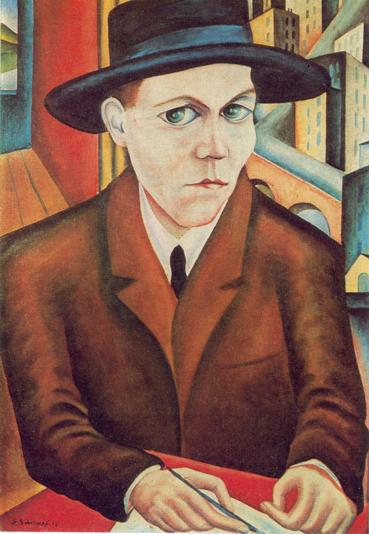
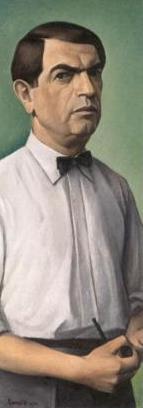
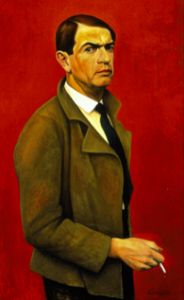
Alexander Kanoldt (29 September 1881 – 24 January 1939) was a German magic realist painter and one of the artists of the New Objectivity.
Kanoldt was born in Karlsruhe. His father was the painter Edmond Kanoldt, a late practitioner of the Nazarene style. After studies at the Academy of Fine Arts Karlsruhe in Karlsruhe he went to Munich in 1908, where he met a number of modernists such as Alexei Jawlensky, Wassily Kandinsky and Gabriele Münter. He became a member of the Munich New Secession in 1913, with Jawlensky and Paul Klee. After military service in World War I from 1914 to 1918, the still lifes Kanoldt painted show the influence of Derain and an adaptation of cubist ideas.
By the early 1920s Kanoldt developed the manner for which he is best known, a magic realist rendering of potted plants, angular tins, fruit and mugs on tabletops. He also painted portraits in the same severe style, as well as geometrical landscapes. In 1925 he was made a professor at Breslau Academy, a post he held until 1931. During this time he came into conflict with the Bauhaus faction at the Academy, and he was increasingly at odds with the avant garde. From 1933 until his resignation in 1936 he was the director of the State School of Art in Berlin.
With the rise of the Nazi regime in 1933 Kanoldt attempted accommodation, painting in a romantic style, but nonetheless many of his works were seized by the authorities as degenerate art in 1937. He died in Berlin in 1939.
